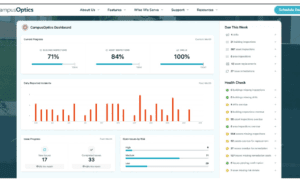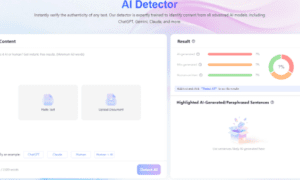In today’s fast-paced world, managing finances efficiently has become essential. The rise of digital innovations has drastically changed how individuals and businesses handle their money, offering more accessible, user-friendly solutions that empower people to take control of their financial lives.
From everyday transactions to long-term savings, these technologies have simplified what was once a time-consuming process. But what does this digital shift mean for the average person? It means better decision-making, less stress, and a more straightforward path toward financial goals.
Convenient Financial Management at Your Fingertips
Technology’s impact on money management is multifaceted, encompassing everything from mobile banking to AI-driven financial advisors. These tools make it easier to track spending, plan budgets, and save money—all from the comfort of your smartphone or laptop. Digital platforms now provide a way to manage accounts and investments without visiting a bank or speaking to a financial advisor in person, offering unprecedented convenience and transparency.
One of the most significant shifts in this space is the rise of digital wallets, which allow users to store funds electronically, making transactions smoother and faster. With contactless payment options like Apple Pay and Google Wallet, paying for everyday items like groceries, gas, and online subscriptions is more seamless than ever.
The ease of transferring money between accounts or even to friends and family means fewer checks are written and fewer trips to the ATM, making financial management simpler and more accessible for everyone. This increased ease and accessibility have empowered individuals to become more financially literate and take greater control of their financial futures.
Digital Tools for Financial Planning
In today’s digital age, various online tools can simplify financial planning, making it more accessible for everyone. Tools like online budgeting calculators can assist in various aspects of money management, such as planning savings, estimating loan payments, or budgeting. Savings calculators also help individuals see how their savings can grow over time by inputting details like monthly contributions, interest rates, and target goals.
These tools empower users to make more informed financial decisions by showing how small changes, like increasing contributions or starting earlier, can significantly impact long-term goals. Whether planning for retirement, saving for a big purchase, or simply managing day-to-day finances, using an online calculator can be a helpful first step in building a solid financial strategy.
Moreover, these calculators are not just limited to savings—they can also simplify complex scenarios like determining mortgage payments or evaluating investment returns, making them versatile aids for anyone looking to understand their finances better. This versatility means that users, regardless of their financial knowledge, can access valuable insights and plan with greater clarity, bridging the gap between financial goals and the steps needed to achieve them.
Simplifying Financial Management
Automation plays a key role in the digital transformation of money management. Automating payments for bills, loans, or even savings can make a huge difference in sticking to a financial plan. These automated systems ensure that payments are never late, helping to avoid fees or penalties, and they also support the development of consistent saving habits by allowing users to schedule regular transfers to their savings accounts.
The simplicity of setting up these recurring payments has taken much of the stress out of managing multiple bills each month. Beyond transactions and payments, digital innovations have also streamlined budgeting. Budgeting apps like Mint, YNAB (You Need a Budget), and PocketGuard have become increasingly popular, offering features that categorize spending, monitor cash flow, and analyze spending habits.
These apps provide real-time insights into where money is going and where savings can be made, with clear visualizations that help users identify unnecessary expenses and adjust their budgets accordingly. Together, automation and innovative budgeting tools create a more organized, efficient approach to managing personal finances, fostering accountability and financial stability.
Digital Tools Transforming Financial Access
The rise of robo-advisors has brought a new level of accessibility to investment management, making it easier for individuals to grow their wealth. These tools use algorithms to build and manage investment portfolios based on a user’s goals, risk tolerance, and time horizon. This automation allows those with limited time or expertise to create diversified investment strategies, offering low-cost management compared to traditional human advisors.
Robo-advisors continuously monitor the market and adjust portfolios as needed, keeping investments aligned with the user’s objectives. This hands-off approach means that even beginners can participate in the stock market without constantly monitoring its ups and downs. Digital innovation has also significantly impacted lending, with online lenders and peer-to-peer platforms emerging as alternatives to traditional banks.
These platforms provide quicker access to personal loans, small business loans, and other forms of credit, often using technology to assess creditworthiness in new ways, like analyzing transaction history or social data. This can result in better rates or approvals for those who might be turned down by conventional banks. The process is typically faster, with many online lenders able to approve and fund a loan in as little as a day. This speed and convenience make digital lending platforms a valuable option for individuals or businesses needing immediate access to funds.
Security and Personalized Financial Advice
Security remains a top priority in the digital age, especially when managing finances online. Advances in cybersecurity have made online transactions safer than ever, with technologies like encryption, multi-factor authentication, and biometric verification (such as fingerprint or facial recognition) providing additional layers of protection.
Financial institutions and fintech companies have heavily invested in these measures to safeguard customers’ sensitive information, ensuring that users can manage their money with confidence, free from concerns about potential breaches. At the same time, digital advancements have transformed how personalized financial advice is delivered. AI-powered chatbots and virtual financial advisors now offer tailored advice based on an individual’s spending habits, financial goals, and current situation.
These digital advisors are available 24/7, ready to answer questions about credit, loans, or investments, making financial guidance more accessible than ever. They provide actionable insights that help users make better financial decisions, whether it’s paying down debt more effectively or exploring new investment opportunities. The combination of robust security and readily available personalized advice makes digital platforms an invaluable resource for those looking to optimize their financial management.
Integration and Digital Literacy
As digital platforms continue to evolve, they are becoming more integrated, making it easier for users to manage their finances. Many banking apps now feature investment options, savings goals, and budgeting tools within a single interface, offering a comprehensive view of financial health. This integration simplifies money management, eliminating the need to switch between multiple apps or websites. With all aspects of their finances in one place, users can better understand their overall financial situation and make adjustments as needed.
However, to fully benefit from these digital innovations, a certain level of digital literacy is essential. Understanding how to navigate these tools and interpret the data they provide is crucial for maximizing their potential. This knowledge allows users to confidently explore a wide range of online tools, such as savings calculators and investment trackers, enabling more precise and informed decision-making. For those who embrace these technologies, the reward is a more organized, stress-free approach to managing money, making it easier to achieve financial goals in this digital age.
Conclusion
Digital innovations have undeniably transformed money management, making it simpler, more accessible, and user-friendly. From automated payments and budgeting apps to savings calculators and robo-advisors, these tools empower individuals to take charge of their finances. The shift from traditional methods to digital solutions means less time spent on managing money and more time focusing on what truly matters. As technology continues to advance, even more innovative solutions will likely emerge, further simplifying the way we handle our finances.



































